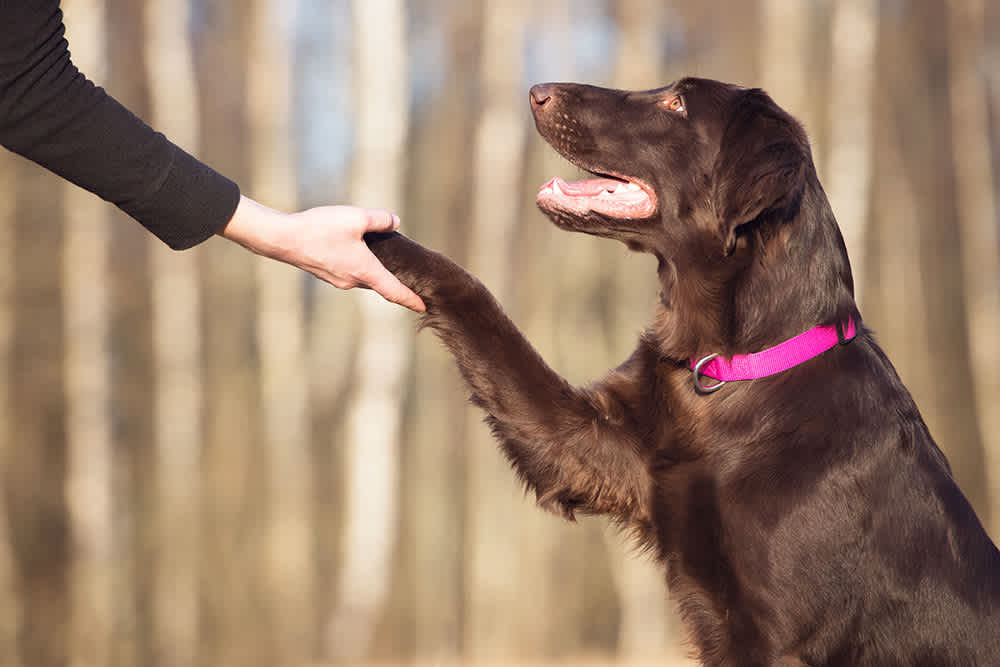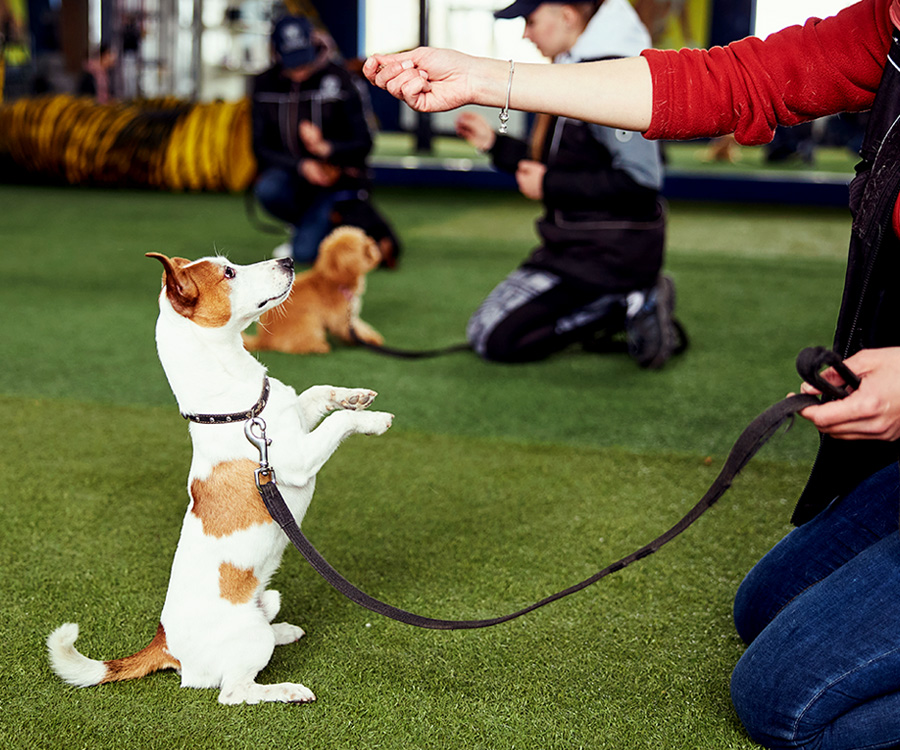Transform Your Canine's Behavior With Proven Training Methods
Changing your dog's actions needs a nuanced understanding of their private traits and requirements, as well as the application of tried and tested training techniques. Uniformity in your training strategy not only boosts obedience however likewise promotes a deeper bond of count on and respect in between you and your pet.
Understanding Dog Behavior
Comprehending pet habits is vital for effective training and interaction in between human beings and their canine friends. Dogs, as social pets, display a series of habits affected by genes, atmosphere, and experiences - Dog training. Recognizing these actions assists owners customize their training approaches to meet the certain demands of their pet dogs
Key facets of canine behavior include body movement, vocalizations, and social communications. A wagging tail commonly suggests exhilaration, while a decreased head might indicate submission or concern. Comprehending these signals can aid proprietors interpret their dog's emotional state and react appropriately. Furthermore, socializing plays a crucial function in forming behavior; pets that engage positively with various individuals and other pets are usually more adaptable and well-adjusted.
Moreover, identifying stress and anxiety signals-- such as panting, pacing, or evasion behaviors-- can protect against escalation right into more significant issues. Owners who are attuned to their pet dog's habits can create a nurturing and safe setting, promoting count on and improving the training procedure. Inevitably, a deep understanding of canine habits lays the structure for a harmonious partnership and effective training results, guaranteeing both pets and their proprietors grow with each other.
Positive Reinforcement Methods
Positive reinforcement methods are extensively acknowledged as one of the most efficient approaches for training canines, promoting a favorable learning environment. This strategy involves fulfilling wanted actions with treats, praise, or play, consequently encouraging the canine to repeat those habits. Unlike vindictive methods, favorable support develops trust and strengthens the bond between the fitness instructor and the pet dog.
To carry out positive reinforcement properly, timing is critical. Rewards need to be given right away following the desired habits to aid the pet dog make the connection. Uniformity is likewise vital; using the very same commands and rewards aids the dog recognize what is expected. Furthermore, varying the incentives can keep the dog engaged - Dog training. Rotating in between treats, playthings, and spoken praise can preserve interest and inspiration.
It is necessary to note that positive support is not about bribery; instead, it has to do with reinforcing etiquette. In time, as the pet finds out to associate certain actions with favorable end results, the frequency of rewards can be progressively reduced, transitioning to verbal appreciation or periodic benefits. This approach not just motivates obedience yet likewise promotes a satisfied and positive dog, making training a more enjoyable experience for both events included.
Resolving Common Concerns
Resolving usual concerns during dog training is vital for guaranteeing a successful and unified connection between the canine and its owner. Several pet dog proprietors experience behavioral obstacles, such as extreme barking, leaping, and leash drawing. Understanding the source of these behaviors is essential for effective training.
Extreme barking may originate from boredom, stress and anxiety, or a lack of socialization. To mitigate this, useful reference supply sufficient workout, psychological excitement, and chances for social interaction with both human beings and other pets. Leaping can frequently signify enjoyment or a wish for attention. Training the canine to rest upon greeting can reroute this actions positively.
Chain pulling is another widespread issue, regularly arising from a pet's passion to discover. Using correct chain dealing with strategies, incorporated with training methods that encourage loose-leash walking, can substantially boost this habits.
Additionally, problems like resource safeguarding or splitting up anxiousness call for tailored techniques. Gradual desensitization and counter-conditioning can be effective in dealing with these difficulties. By recognizing and proactively managing these usual issues, pet dog owners can promote an extra satisfying training experience and reinforce the bond with their canine companions.
Uniformity in Training

To achieve consistency, it is crucial that all members of the family stick to the same training approaches. Using the same verbal cues and hand signals makes certain that the pet dog receives consistent messages. In addition, the timing of incentives and adjustments should be consistent; prompt reinforcement raises the chance that the canine will connect the actions with the outcome.
Normal practice sessions, coupled with structured schedules for feeding, walking, and playtime, aid pets anticipate and comprehend their setting, making them much more receptive to training. Inevitably, uniformity cultivates a feeling of protection and count on, empowering dogs to find out much more properly.
Building a Solid Bond
Just how can promoting a solid bond between a pet dog and its owner improve the training experience? When a pet dog feels safe and secure in its link with its owner, it is extra likely to exhibit favorable behaviors and be receptive to discovering.
Furthermore, a strong bond facilitates far better communication. Canines are experienced at reviewing human cues, and a go to the website relying on relationship permits more clear signals throughout training. Proprietors that invest time in building this bond with play, socializing, and positive support create a setting where canines really feel determined and eager to discover.
In addition, a reputable connection can reduce stress and anxiety and behavior issues, as canines are much less most likely to act out when they really feel recognized and taken care of. Consequently, prioritizing the growth check that of a solid bond not just boosts the training experience but likewise adds to a happier and much more well-adjusted dog. Eventually, the journey of training changes right into a collaborative collaboration, leading to lasting behavior renovations.
Verdict

Owners that are attuned to their pet dog's behavior can create a safe and caring environment, fostering trust fund and improving the training process. Eventually, a deep understanding of canine behavior lays the structure for an unified partnership and effective training end results, making sure both dogs and their owners flourish with each other.
Addressing typical issues during pet dog training is necessary for guaranteeing a effective and harmonious relationship in between the canine and its proprietor.Uniformity is a cornerstone of effective pet training, as it develops a clear structure for the pet to comprehend assumptions and actions.In verdict, transforming a dog's behavior with verified training approaches calls for an understanding of canine habits, the application of positive reinforcement techniques, and an emphasis on consistency.